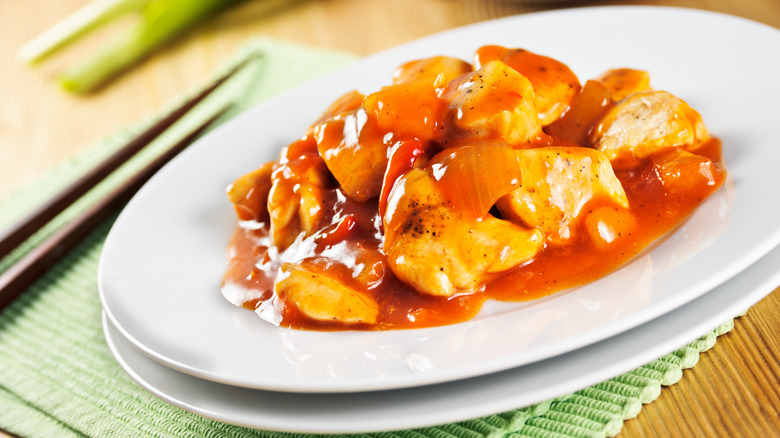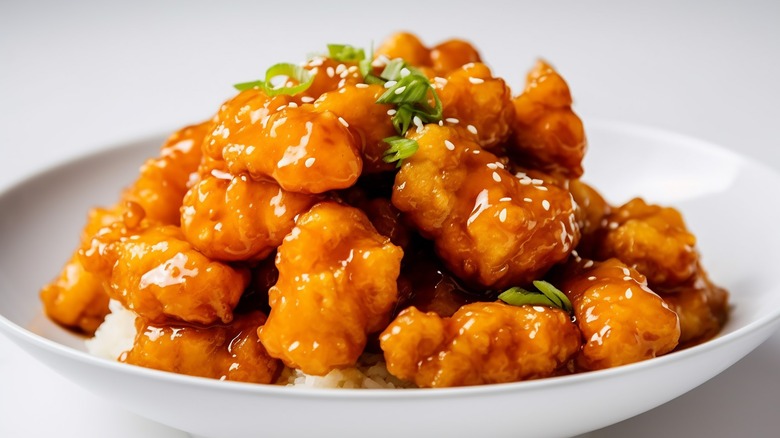How Sweet And Sour Sauce Became A Staple Of Chinese American Cuisine
From the must-order dishes of the dim sum feast originating in Guangdong Province to Sichuan peppers, the palate-vibrating ingredient used in dishes in that province's cuisine, regional Chinese food encompasses an expansive range. However, Chinese restaurants in the United States often highlight dependably similar offerings — comforting classics like orange chicken and crab rangoon. Believe it or not, these stalwarts of Chinese American cuisine were crafted by Chinese immigrants and their descendants, as was sweet and sour sauce.
Created in the late 19th century, sweet and sour sauce takes inspiration from Cantonese cooking but uses Western techniques. Its likely predecessor is the condiment used for the Cantonese dish goo lo yok, which combines Western ingredients like ketchup, pineapple, and peppers and was innovated to appeal to foreign visitors. Somewhere down the line, the culinary creation made its way to the United States alongside Chinese immigrants, who opened numerous restaurants and further tweaked the sauce into today's beloved creation.
Sweet and sour sauce is crafted with Western tastes in mind
Whereas its predecessor employed shanzha, a bright red sweet-and-sour-tasting berry, Westernized sweet and sour sauce typically relies on ketchup to lend it its reddish hue, as well as cornstarch to give it its thick consistency and a combination of sugar and vinegar to construct its fundamental flavor backbone.
Westernized sweet and sour sauce is much sweeter than traditional sweet and sour sauce, whose sweetness is derived from syrups, honey, or fruit rather than sugar. Other additions are varied, ranging from Worcestershire sauce and canned pineapple juice to different kinds of vinegar, including apple cider and malt.
Today, sweet and sour sauce is commonly thrown together with fruits and vegetables chopped into large pieces and served over battered and deep-fried pork, chicken, or shrimp, but regardless of the precise ingredients, it's a Chinese American classic that has remained in fashion for decades.

